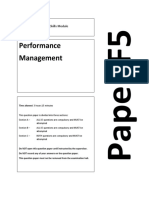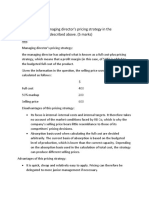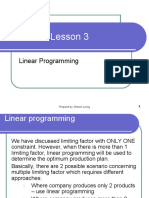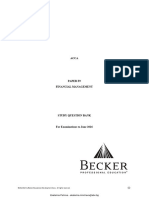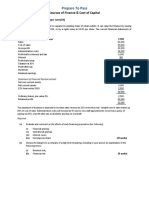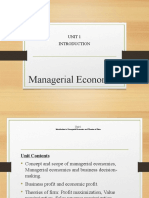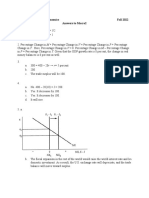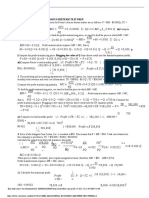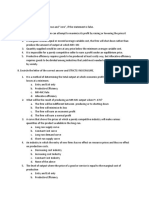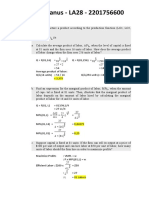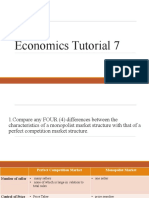0% found this document useful (0 votes)
713 views69 pagesCost Efficiency & Budget Analysis
The document discusses efficiency improvements to reduce the cost gap for a product. The target cost is $60 per unit, while the actual achievable cost is currently 3% higher at $61.86 per unit. Labour costs $8 per hour. To completely remove the cost gap, labour time per unit would need to be reduced by 3.6% through internal training to improve efficiency. This can be calculated using the standard cost card and determining the labour hours required to produce one unit at the target cost versus actual cost.
Uploaded by
percy mapetereCopyright
© © All Rights Reserved
We take content rights seriously. If you suspect this is your content, claim it here.
Available Formats
Download as PDF, TXT or read online on Scribd
0% found this document useful (0 votes)
713 views69 pagesCost Efficiency & Budget Analysis
The document discusses efficiency improvements to reduce the cost gap for a product. The target cost is $60 per unit, while the actual achievable cost is currently 3% higher at $61.86 per unit. Labour costs $8 per hour. To completely remove the cost gap, labour time per unit would need to be reduced by 3.6% through internal training to improve efficiency. This can be calculated using the standard cost card and determining the labour hours required to produce one unit at the target cost versus actual cost.
Uploaded by
percy mapetereCopyright
© © All Rights Reserved
We take content rights seriously. If you suspect this is your content, claim it here.
Available Formats
Download as PDF, TXT or read online on Scribd
/ 69


